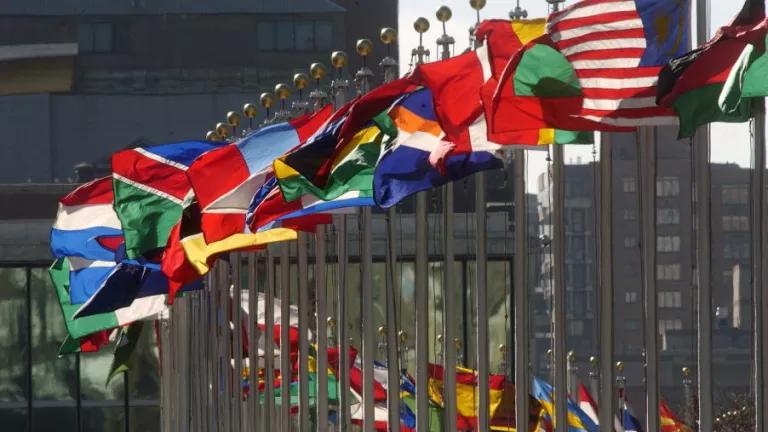INDC: The Acronym Standing Between Us and Disaster
What’s an intended nationally determined contribution?

Intended nationally determined contribution (INDC) (n.): a government commitment to limit carbon emissions
The United Arab Emirates last week became the latest country to submit its intended nationally determined contribution, or INDC, to the United Nations. INDCs—not the catchiest acronym—are perhaps the most important promises being made by governments today. With an INDC, a national government commits to limiting carbon emissions over the next 10 to 15 years.
The phrase rose to prominence at the 2013 Warsaw climate conference. After inadequate preparation doomed several climate change meetings, negotiators agreed that each country would offer a carbon reduction commitment in the first quarter of 2015. This would give scientists and politicians eight months before the critical Paris meeting to assess whether the collective cuts would avert a disaster.
INDCs come in several forms. Some countries have opted for limits relative to specific years in the past (e.g., a 50 percent reduction in carbon emissions by 2030, compared with a 2005 baseline). Other governments have promised to lower their emissions per unit of GDP, fearing that an absolute cap could restrain their economic growth. A third option is committing to a reduction against “business as usual,” the country’s projected emissions if it were to take no preventive measures.
It has been a meandering, chaotic process. Only four countries plus the European Union submitted an INDC by the March 31 deadline. Several of the late submissions were frustratingly unambitious. Russia thinks trees can absorb all of its runaway carbon emissions. Australia ignored the advice of its own government climate authority. Canada cut funding for green energy and will remain a climate pariah until it stops expanding the tar sands industry. Other countries, such as Indonesia, declined to define their business-as-usual scenarios, making it virtually impossible to measure their compliance.
Nevertheless, the INDC process is better than anything that came before. As of this writing, 126 countries, together responsible for 87 percent of current global carbon emissions, have submitted INDCs. On November 1, the United Nations will estimate how much more is necessary to limit global warming to 2 degrees Celsius. So when negotiators arrive in Paris at the end of the month, they’ll at least have a starting point for discussions that just may save the world.
This article was originally published on onEarth, which is no longer in publication. onEarth was founded in 1979 as the Amicus Journal, an independent magazine of thought and opinion on the environment. All opinions expressed are those of the authors and do not necessarily reflect the policies or positions of NRDC. This article is available for online republication by news media outlets or nonprofits under these conditions: The writer(s) must be credited with a byline; you must note prominently that the article was originally published by NRDC.org and link to the original; the article cannot be edited (beyond simple things such grammar); you can’t resell the article in any form or grant republishing rights to other outlets; you can’t republish our material wholesale or automatically—you need to select articles individually; you can’t republish the photos or graphics on our site without specific permission; you should drop us a note to let us know when you’ve used one of our articles.

Electric vs. Gas Cars: Is It Cheaper to Drive an EV?
Liquefied Natural Gas 101
The Uinta Basin Railway Would Be a Bigger Carbon Bomb Than Willow